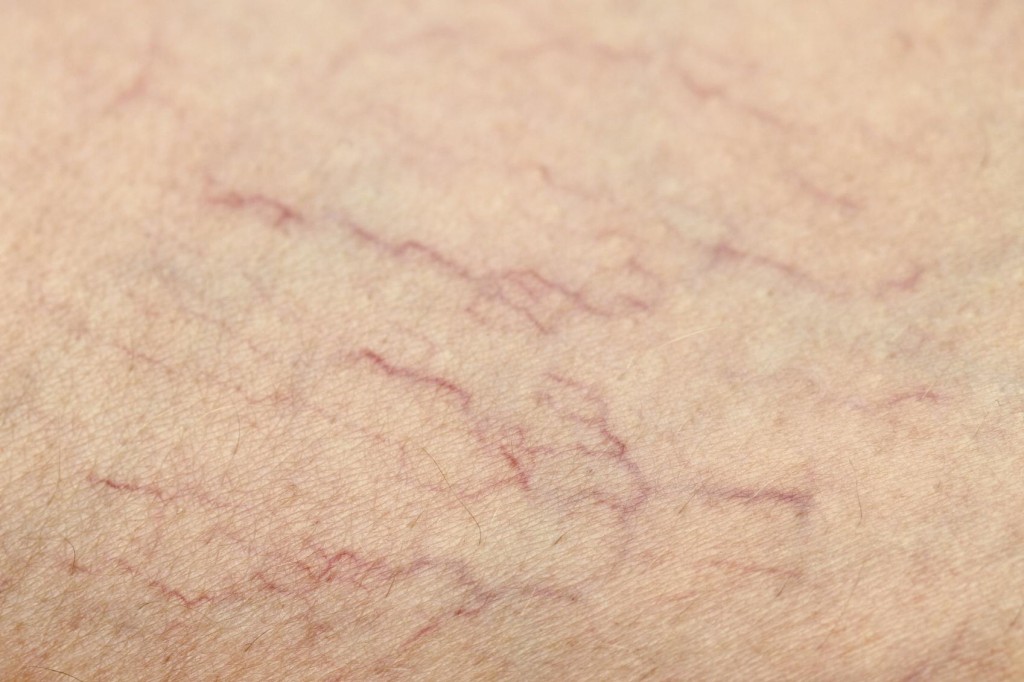What Are Spider Veins?
Spider veins are technically known as telangiectasias. They are actually a mild from of varicose veins. Spider veins differ from full-blown varicose veins in some respects. Spider veins are closer to the surface of the skin. While varicose veins bulge out and can become twisted and gnarled in appearance, spider veins resemble a spider’s web spreading out along the skin. These veins are normally a reddish or bluish color, and they most usually appear on the legs and thighs. However, spider veins can appear on the face. Dermatologists, such as Vanguard Dermatology in New York, offer treatments that can diminish the appearance of spider veins and other skin conditions.
Spider Vein Symptoms
Spider veins are mostly a cosmetic concern unless they become large and form into varicose veins. Some patients report that spider veins in the legs are painful, and patients often report that the area around the veins itches and is dryer than areas of normal skin. If spider veins progress to varicose veins, the veins may become infected and ulcerate.
Causes of Spider Veins
The basic cause of spider veins is a dysfunction of the body’s circulatory system. The arteries in the body carry blood away from the heart to the organs and tissues. The vein’s job is to return this blood back to the heart. Contractions in the muscles of the legs work to move the blood back up toward the heart. In order to keep the blood from rushing back to the feet, the veins have small valves in them that prevent the backflow of blood that is moving toward the heart. When these valves are not working properly, spider veins and varicose veins often develop. These small valves can malfunction for a number of different reasons.
As people get older, the veins tend to become stretched out, and the veins and the valves in them become weak. They work less efficiently. Spider veins and varicose veins tend to run in families. If a patient’s close relative had spider veins, the chances of a patient developing spider veins is greatly increased. Lack of movement can hinder proper circulation in the legs. Circulation in the body is aided by exercise and motion. A person who works at a desk all day has an increased risk of developing spider veins.
Being overweight is a major cause of spider veins. Added weight puts great pressure on the veins causing them to malfunction. Spider veins are more common in women than in men. Doctors theorize that estrogen can cause the vein walls to weaken over time leading to vein problems.
 Spider Vein Treatment
Spider Vein Treatment
The first way that most physicians treat spider veins is through the use of compression stockings. These stockings are available in different grades of compression depending on the severity of the circulatory problem. These stockings are available over-the-counter in most compression strengths.
Sclerotherapy is the main treatment for spider veins. A solution is injected into the veins. Over a period of weeks, this solution irritates the veins causing them to shrink and form into scar tissue. This tissue fades over time. Several treatments may be necessary, but the success rate is around 90 percent. Some clinics are now offering laser therapy to remove spider veins. Fewer treatments are necessary with minimal side effects.
Spider veins are an unsightly annoyance that can disrupt a person’s life by making them feel uncomfortable with their appearance and avoid the gaze of other people. With the advancement of methods and cosmetic dermatologist procedures, many people can benefit from the effects that lessen or even eradicate the appearance of spider veins.
Vanguard Dermatology has convenient locations in SoHo, Greenpoint, Sheepshead Bay, Forest Hills, and Staten Island. Visit their website today for more information!
Originally posted on February 19, 2014 @ 4:04 pm
